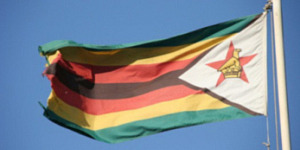Zimbabwe became the third central bank in Southern Africa to tighten its monetary policy stance this year, saying the move takes into account the current liquidity conditions in the market and the need to control speculative borrowing as its maintains a conservative monetary targeting framework in 2021.
The Reserve Bank of Zimbabwe (RBZ) raised its policy rate for overnight accommodation by 500 basis points to 40.0 percent, the medium-lending rate for the productive sector to 30 percent from 25 percent and the statutory reserves to 5.0 percent from 2.5 percent for demand and/or call deposits.
"The decision on interest rates takes into account the current liquidity conditions in the market and the need to continue controlling speculative borrowing," the bank said in its monetary policy statement that evaluates the progress since August 2020 and policy measures to be pursued for the next six months.
Earlier today Zambia's central bank raised its key interest rate by 50 basis points to contain rising inflation, following on the heels of Mozambique's central bank that raised its key rate 300 points in late January due to rising inflation from continued depreciation of its currency.
Last year Zimbabwe's central bank cut its key interest rate in March and April by a total of 20 percentage points to 15.0 percent, continuing an easing cycle that began in November 2019 when the rate was cut to 35.0 percent from 70 percent.
But as part of an overhaul of its foreign exchange system, the central bank in June 2020 reversed course and raised the policy rate back up to 35.0 percent to help stabilize the exchange rate.
Today RBZ maintained its rate on time deposits at 2.5 percent, saying the differentiation by maturity was expected to incentives banks to hold long-term liabilities or time deposits and thus facilitate long-term lending in the medium term.
Last year Zimbabwe abandoned its policy of strictly controlling foreign exchange in favor of a 3-pronged strategy that includes foreign exchange auctions to discover a market exchange rate along with a more conservative monetary targeting framework to keep inflation and the exchange rate in check.
Zimbabwe has for years suffered with a depreciation of its dollar, which was reintroduced in 2019, but the central bank said the introduction of the foreign exchange auction system in June last year had minimized distortions in prices by curtailing speculative prices and parallel market exchange rate indexation of prices by businesses.
The premium on the parallel exchange rate has narrowed to what RBZ said was a "tolerable band of up to 20%, consistent with experiences in other countries," and helped dampen inflation pressures.
The bank has also implemented a conservative monetary targeting framework to contain money supply growth, reduce pressure on the exchange rate and inflationary pressures, noting reserve money grew 18.6 percent in 2020 against a target of 25 percent per quarter.
For 2021 the target for quarterly reserve money growth will be lowered to 22.5 percent, which RBZ said was consistent with targeted end of year inflation of below 10 percent and the projected 7.4 percent economic growth.
"The measured optimism is based on the expected significant growth of the agricultural output in 2021, as a result of the good rainy seasons, fiscal sustainability and the Bank's focus on price and financial system stability," RBZ said.
Helped by keeping reserve money growth in check and a more efficient allocation of foreign currency, RBZ said inflation has been on a downward trajectory since the second half of last year and monthly headline inflation ended 2020 below 5 percent, as it desired, resulting in annual inflation of 348.6 percent, slightly above its forecast of 300 percent.
In January, however, the annual inflation rate rose to 362.6 percent from 348.6 percent in December due to higher administrative levies and other charges that traditionally take effect at the start of the year.
"Overall, both headline and blended inflation are expected to progressively decline in 2021," RBZ said.























































